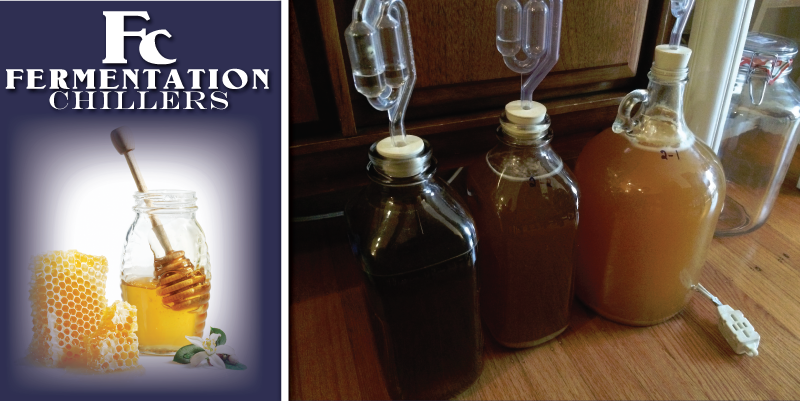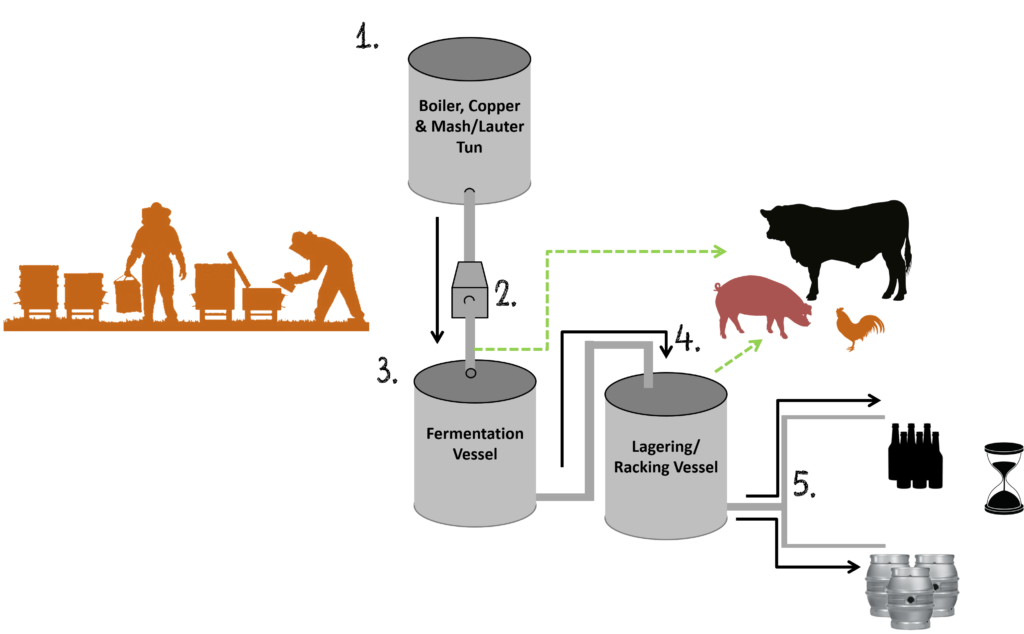Mead or “honey wine” is produced by fermenting honey, water, and a few flavor additives. This fermented beverage is one of the oldest alcoholic drinks in human history. The fermentation process is very similar to wine. In fact, most brewers use the same yeasts use to ferment white wine. The major difference between mead and other fermented beverages is the use of honey. Beer, wine, and hard cider utilize plant materials as the food source for the yeast. The sugars present in the honey feed the yeast which excrete alcohol and carbon dioxide. After fermentation mead contains an alcohol content anywhere from 8% to 20%.

The first and most important step of any fermentation cycle is sanitizing the equipment. Microbial contaminates such as bacteria, molds, and wild yeast will spoil the mead. Once the equipment is sanitized the must can be added. The must contains the honey, water, and flavoring ingredients. At this point yeast can be introduced to the must and fermentation begins. The fermentation process takes anywhere from several weeks up to a few months. The longer fermentation is allowed to occur, the higher the alcohol content will be. Racking is required every few months. This is where the clear mead is syphoned out of the original container into a new sanitized one. This is necessary due to the sediment that forms from the dead yeast cells settling. The mead is allowed to continue to ferment and settle in the new container. This process is usually completed several times to create clear final product.

